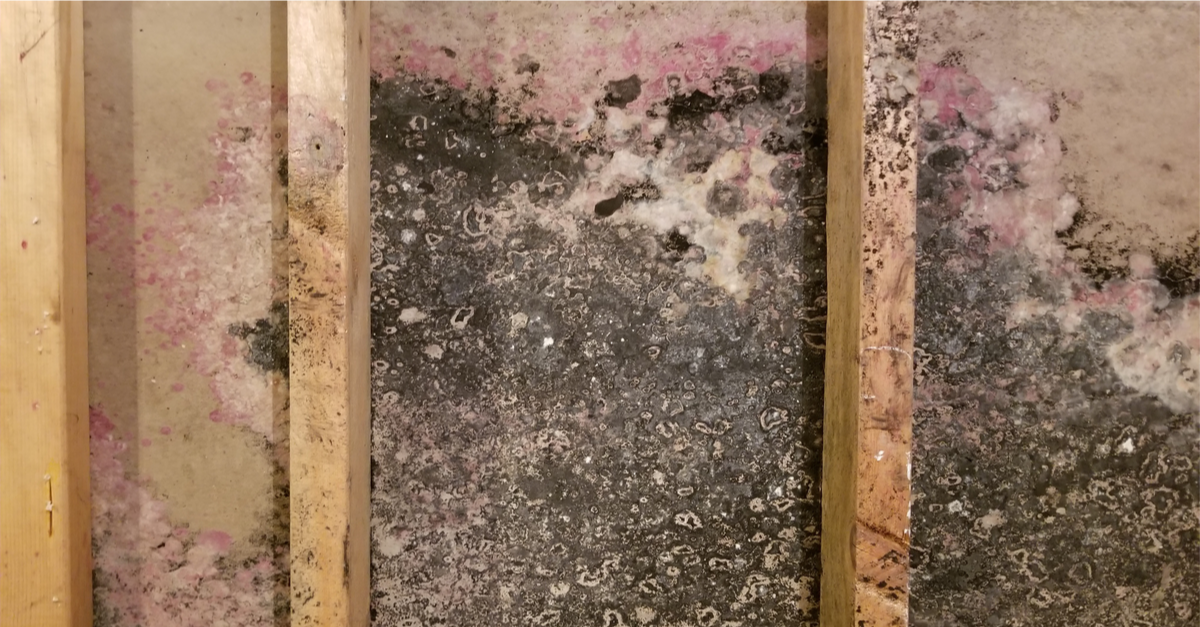Future Building Materials: Transparent Wood, Self-Healing Concrete & More
Future Building Materials: Transparent Wood, Self-Healing Concrete & More

Mold can be found everywhere we work, live, and play. Whether inside or out, floating in the air or stuck on surfaces of every size and shape, mold is always present in our environment. In most cases, mold is not a problem for us or the places it lives (producing some foods, beer, and life-saving pharmaceuticals need mold).
But mold has a particular liking for the materials we use in constructing our buildings and the conditions we use them. And that becomes a problem when mold threatens building material integrity and performance, leading to potential cost overruns, scheduling issues, and delivery delays. In other words, unwanted extra work and a possible backlash from architects, engineers, owners, and contractors who no longer have a perfectly specified, quality building product but a compromised one. This article covers ways to recognize conditions that support mold growth and how to keep mold from impacting the quality and fitness of building materials.
Mold is a living organism in the diverse life kingdom of Fungi, which includes mushrooms, mold, and mildew. In nature, mold is one of the grand recyclers of organic matter and plays a crucial role in breaking down plants, leaves, and wood. Mold reproduces by microscopic spores easily transported elsewhere in air, by physical disturbance, even by hitching a ride on our clothes.
Most mold species can produce spores into millions, even billions under minimal and common growing conditions. Mold spores are invisible to the naked eye, except when they flourish into colonies and grow visible masses of pigmented spores in yellow, green, black, orange, and an array of other colors. The fuzzy green mold on the bread in the kitchen started from a mold spore that landed on the bread and grew.
Mold needs four things to grow. But the single most important is moisture—no moisture, no mold. Mold also needs a food source, oxygen, and a temperature roughly in the range of 32- to 140-degrees Fahrenheit. The ideal growing temperature for mold to thrive is between 70- and 85-degrees Fahrenheit. These needs are commonly met in a never-ending variety of situations where we put building materials indoors and out.
Mold thrives by consuming organic materials and growing under the ordinary conditions that exist practically everywhere building materials are. It has a strong appetite for organic materials, primarily cellulose in wood and wood products. Cellulose is the main substance in plant cell walls and a component of wood and products made from wood, which is found on every construction site and practically every structure worldwide in one form or another.
The fiber in wood contains the sugars, starches, and proteins that mold needs to live. When the essential four growing conditions are present, mold will thrive while consuming its food source. Once it starts eating, mold can be a tough guy to get away from the dinner table.
Generally, the more processed the wood product, the more mold favors it as a food source. Materials made from chopped-up pieces of wood are more likely to harbor and sustain mold than solid wood. The more refined structure (i.e., chopped-up) of today’s wood-derived building materials provides mold with an excellent food source. For example, mold prefers wet paper over wet wood and oriented strand board (OSB) over wood timbers. Mold can even colonize non-organic materials like metal, concrete, glass, or painted surfaces when a thin layer of organic nutrients is present.
The problems associated with mold on building materials include discoloration from mold stains and decay that erodes material fitness. Even small amounts of mold, only visible as an innocent-looking surface dusting, can lead to an outright rejection of material and the need for laborious cleaning or replacement.
More time in an environment conducive to mold (i.e., moisture, food, temperature, and oxygen) increases the chances of material damage from mold or moisture. Depending on conditions, this ranges from only a few days for paper-backed drywall to a week or two for plywood, for instance. Early detection and prompt problem-solving for moisture issues are the way to keep mold from becoming a menacing setback.
The two main tools of mold detection are our eyes and nose (despite the extraordinary technologies we have). If you can see mold visibly or smell it, a mold problem is likely. Testing, microscopic analysis, air samples, and other similar examination procedures are generally not needed. The visible presence of mold, or its musty smell, is enough to warrant further examination of a moisture problem and cleaning or replacing building materials.
This “eyes-and-nose" approach to mold detection, while rudimentary, is reassuring when one considers that there is no industry standard for determining whether a mold problem exists (e.g., the number of spores on a square millimeter of drywall). The US Environmental Protection Agency (EPA), for example, does not regulate mold or mold spore quantities in indoor air. Likewise, no health standards exist that determine whether mold exposure levels are too high. Let your eyes and nose be the tools to detect a mold problem before it gets out of hand.
Oxygen, favorable temperatures, and food sources are everywhere building materials are, and controlling these conditions is not critical to mold prevention. Controlling moisture, however, is the most effective way to maintain mold-free building materials. Identify and control moisture by monitoring and assessing the materials and the environment. Look for signs of moisture intrusion and mold-growth-friendly, high relative humidity levels.
Relative humidity, basically moisture in the air, favors mold growth above 50 percent and amplifies mold development as the humidity level increases. Check the relative humidity at different times of the day since it may fluctuate. Consider multiple readings of relative humidity above 55 percent indicative of a potential moisture issue needing resolution. It is critical to find and correct the moisture problem or a mold issue, and the potential for materials becoming unsuitable will remain.
A handheld or wall-mounted hygrometer can provide a reliable relative humidity reading. These instruments and are available for purchase online and in home supply stores. Indoors, relative humidity is controllable with air systems, dehumidifiers, and other mechanical means to cut the moisture-laden air physically. Significant leaks in the building envelope and water infiltration problems like leaky foundations and burst pipes need swift corrective action.
A more significant challenge exists in controlling relative humidity outdoors or in unsealed spaces. Still, it typically involves solving a moisture-related problem like unexpected water infiltration of a storage area and then allowing the materials to dry and remain so.
Consider ways to minimize the risks of mold damage before it happens and let buyers, distributors, and contractors know them, too. One way to cut mold risk is to assess the conditions in which materials are transported, stored, and used. A conditions assessment performed along the supply chain and throughout the product lifecycle reduces the chances for moldy materials. The assessment goal is to monitor, evaluate, and correct the potential conditions that favor mold growth.
Start by looking at the transportation and delivery conditions of the building materials. Monitor for moisture infiltration and elevated relative humidity. When moisture is present, the interior of trucks, containers, crates, and cardboard packaging is a friendly place for mold. Then consider storage locations like warehouses, distribution centers, jobsites, and other holding areas. Also, consider the environment of installed materials to determine the potential exposure to moisture or humid air that could cause a mold issue.
Since moisture is the main component of mold growth in and around our structures, the significance of moisture awareness throughout the product lifecycle cannot be overstressed. Controlling moisture levels is the most effective way to keep mold at bay. Moisture levels that may contribute to mold growth include the moisture in the air (i.e., humidity) and water from sources such as leaks in the building envelope, spills, improper grading, condensation, and leaks from water supply and drainage systems.
Providing architects, engineers, contractors, buyers, and suppliers with information that helps them deliver the optimum performance from your specified building product is a value-added service. Consider providing this information to establish or expand your position as a building material expert and reliable resource for them.
It’s not just the sensational news stories of “black mold” that have made mold a lively and recurring topic in the building industry; there is more mold than ever. Tighter building envelopes and the building materials we use ensure mold problems are sticking around. It’s not that the amount of moisture in buildings has shifted to new levels, and we’re still using products that are wet by their very nature, like concrete and drywall mud. Instead, we are producing tighter building envelopes and using more significant amounts of mold-friendly (i.e., cellulose-rich) materials.
Neither tight building envelopes nor cellulose-rich building materials are going away. Instead, they appear to be moving favorably toward increased energy efficiency and the production of sustainable, innovative resource usage.
While mold is present everywhere in our environment, mold can be kept off building materials by understanding environmental conditions, monitoring moisture, and remedying problem moisture levels. Building product manufacturers can help inform and educate suppliers, buyers, and end-users to keep mold off materials throughout the products’ lifecycle.
A building product that performs the way it should is a sure way to keep buyers happy and get your products specified again and again.

Marshall Benveniste is a writer and Senior Content Marketing Manager at ConstructConnect with the Economics Group. Marshall has written on various topics for the construction industry, including strategies for building product manufacturers, artificial intelligence in construction, and data-driven decision-making. Before joining ConstructConnect in 2021, Marshall spent 15 years in marketing communications for financial services and specialty construction firms. He holds a PhD in organizational management.
Future Building Materials: Transparent Wood, Self-Healing Concrete & More
Check out these four tips to build relationships between contractors and building material suppliers, distributors, and building product...
Commercial construction costs per square foot vary by location, and factors like building type, materials used, and labor costs must be considered to...
Find out five green construction materials gaining ground as the construction industry begins to embrace innovative green materials and methods.